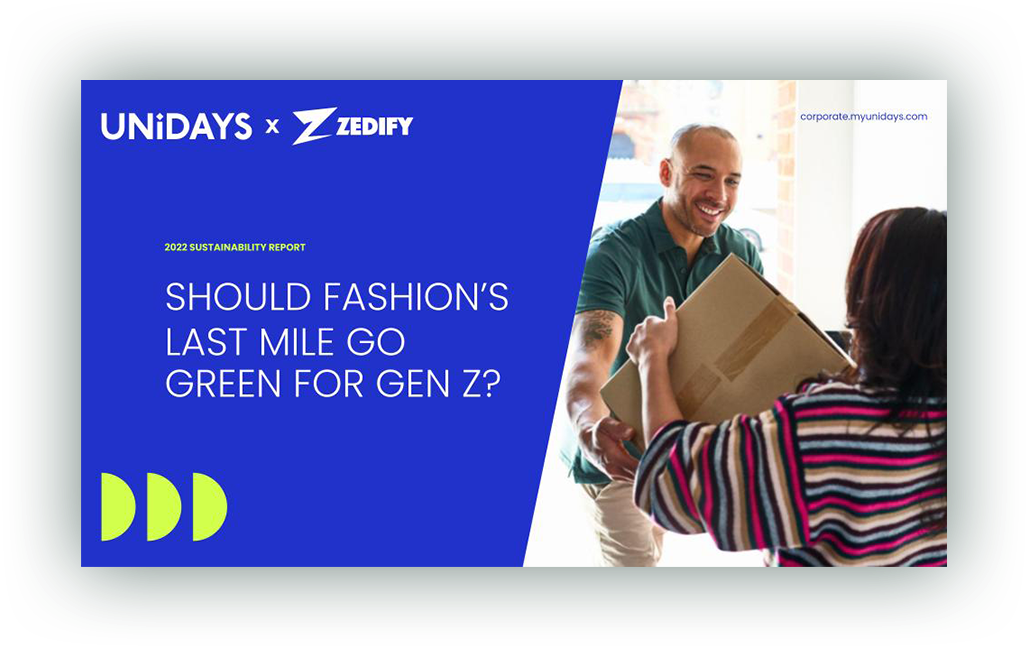It’s the run-up to exam season and Gen Z has plenty of stress factors to juggle. That means students are...
In 2021, Zalando compared the attitudes and behaviours of Gen Zs and Millennials across 12 sustainability dimensions. It found that “60% of survey respondents say transparency is important to them, but just 20% actively seek out information as part of the purchasing process.”
Similarly, “53% believe it is important to buy from brands with ethical labour policies, but only 23% ever investigate policies themselves.” The disparity continues across other dimensions. And we find it in our own research, too.
Our 2022 sustainability report recorded that “80% of students would at least consider paying more for clothing from brands that met their sustainability expectations”. But qualitative responses revealed attitudes such as: “as a student it’s really hard to shop sustainably with the cost of it.”
This is the say-do gap: a discrepancy between what people say they’re going to do and what they actually do in practice. It’s not limited to Gen Z but seen in all consumers. It’s not a new phenomenon and it is far more pronounced when it comes to sustainability.
In 1990, when the say-do gap first emerged, it was known as the ‘value action gap’. According to the Say Do Company, “research at the time noted that price, quality, convenience and brand familiarity influenced purchasing behaviour, while environmental considerations were rarely taken into account, regardless of attitudes to the environment”.
And while IPSOS reports that 72% globally agree that if people do not act now to combat climate change they will be failing future generations, in 2022 our Gen Z student members consistently put price, quality and comfort at the top of their purchasing decisions.
All these years later, the say-do gap prevails. So what can retailers do about it?
The say-do gap represents obstacles
Three obstacles, as identified in 1999 by James Blake in his paper, ‘Overcoming the ‘value-action gap’ in environmental policy: Tensions between national policy and local experience’. Blake suggests tackling these barriers is the only way to close the gap.
James Blake’s barriers to action:
While buying an ethically sourced jumper online might appear to pose different purchasing obstacles to the action of recycling, behaviourally the root of the concerns will be the same.
In fact, UNiDAYS stats back up these barriers.
Individuality
Gen Z have other issues to worry about.
Responsibility
The majority of Gen Z students believe regulation, standards and social conscience are the responsibility of brands and retailers. Our 2022 Fashion Report showed that:
Practicality
Gen Z students consistently cite cost as a reason for not purchasing sustainable options.
If consumers want to do the right thing but find it hard to make sustainable choices, retailers need to make it easier for them to choose the right thing.
Understanding the obstacles before attempting to eradicate them leads to greater clarity and better decisions. The Irrational Agency recommends aligning the research narrative with the action narrative. That is, what consumers are actually doing in the context of a purchase:
“...bring as much as possible of the action context into the research context. For example, show visuals of what the decision environment is like. Talk to your respondents about how they might get to that location and what else they are doing that day. Bring in all the distractions and frustrations that play a role in the action narrative.”
With a deeper understanding of the action narrative, it is far easier to identify and thus eradicate barriers to sustainable purchasing. Focus groups and observational exercises will bring this to light.
If time, money or space are barriers to sustainable action, how can retailers minimise the price, offer purchasing opportunities at the right time or lighten the mental load for Gen Z shoppers?
This can not be the work of one retailer, but needs to be an industry-wide shift in how retailers approach sustainability.
However, optimising ecommerce journeys to make sustainability an effortless choice, removing choices that are less sustainable and adjusting revenue priorities to keep costs (such as delivery fees) reasonable for consumers are ways retailers can help support customers.
Step 3: Consider your own obstacles
There will be a say-do gap in your business too. Tackling this will not only shed light on the obstacles other people will be experiencing - leading to greater empathy (marketing’s superpower) - but also lead to measures that minimise green washing and support real action. In turn, demonstrating to shoppers authenticity and a commitment to doing good - a trait we know Gen Z love.
If your retail business needs deeper Gen Z insights, partnering with UNiDAYS will fast track you to the front of the empathy queue. Contact us here for more information. 
276 5th Ave, New York, NY 10001